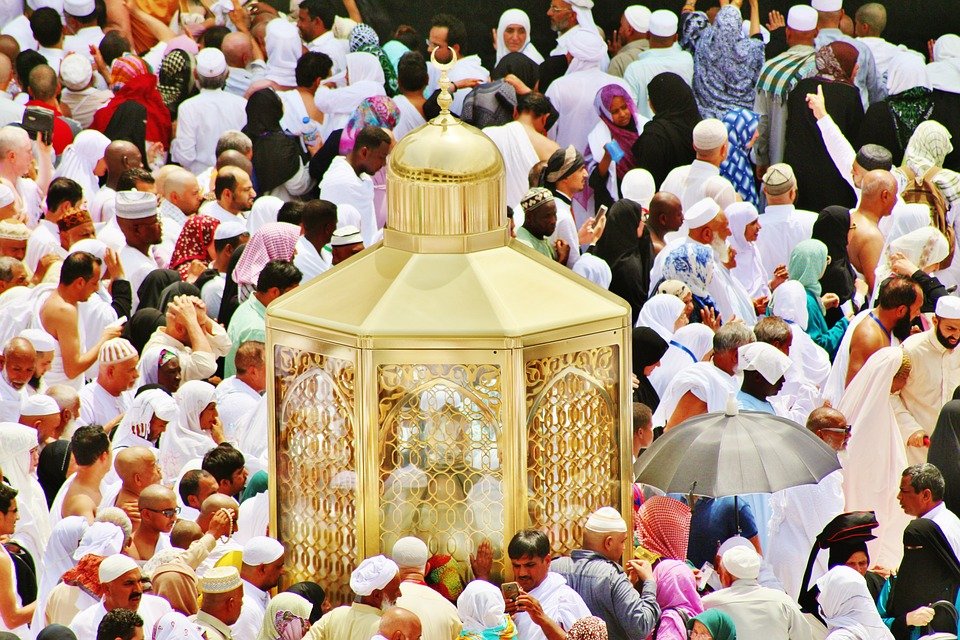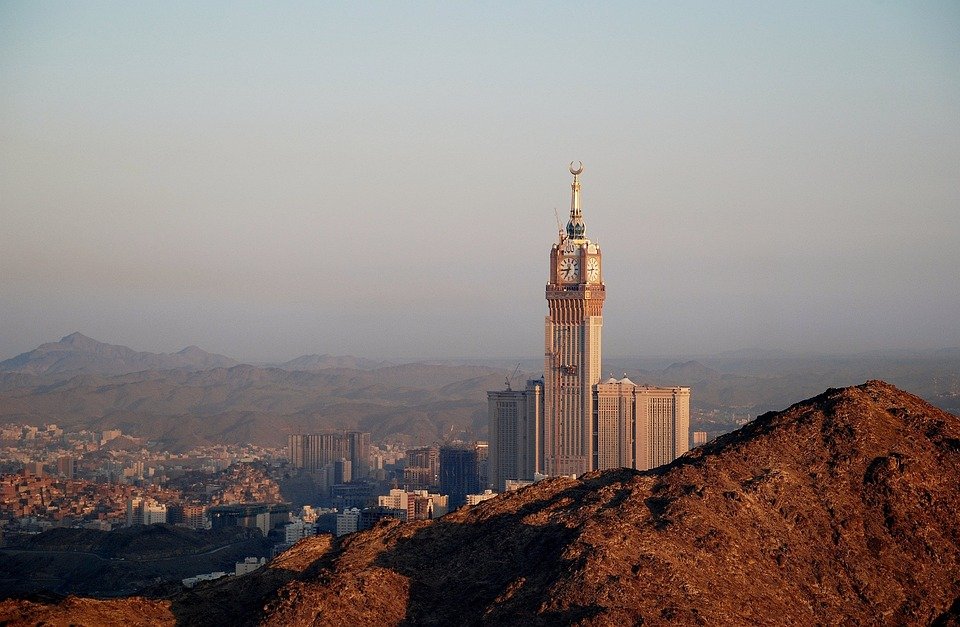You are here to read: What Happens on Eid al-Adha in Hajj: Key Rituals Explained – A Thoughtfully Written Guide Offering Spiritual Wisdom and Travel Advice for Every Pilgrim who is going on holy journey of Hajj or Umrah.
Eid al-Adha in Hajj is a significant moment for millions of Muslims worldwide, marking the culmination of the Hajj pilgrimage. During this sacred festival, pilgrims engage in rituals that commemorate the willingness of Prophet Ibrahim (Abraham) to sacrifice his son as an act of obedience to God. In this article, I promise you a proper guide that explains what happens on Eid al-Adha in Hajj, detailing the essential practices and traditions observed during this time. You will find valuable insights into how pilgrims express their faith and devotion, and I believe that understanding these rituals will deepen your appreciation for this holy occasion.
In my opinion, the significance of what happens on Eid al-Adha in Hajj extends far beyond mere rituals; it is about faith, sacrifice, and community. The act of sacrificing an animal symbolizes sharing and compassion, reminding us of our responsibility toward the less fortunate. As experts in the field, with over nine years of experience at Airlink Hajj and Umrah, we provide valuable information on “What Happens on Eid al-Adha in Hajj: Key Rituals Explained.” This expertise allows us to guide you through these key rituals, enriching your understanding of their importance in Islamic tradition as we help you plan your pilgrimage to Makkah and Madinah.
What Happens on Eid al-Adha in Hajj: Key Rituals Explained
The Meaning of Eid al-Adha
Eid al-Adha is a significant festival celebrated by Muslims around the globe. It symbolizes sacrifice and community. This day falls on the 10th day of Dhu al-Hijjah, the last month of the Islamic calendar. It marks the end of Hajj, the pilgrimage to Makkah. People remember the willingness of Prophet Ibrahim (Abraham) to sacrifice his son as an act of obedience to Allah. However, Allah provided a ram as a substitute at the last moment. This historical event teaches us about trust, sacrifice, and devotion.
On this special day, families come together to celebrate. It’s a time for joy, reflection, and gratitude. The day often starts with a special prayer at the mosque. People dress nicely, and the atmosphere buzzes with excitement. They gather to offer thanks to Allah and to ask for blessings. The message of love and unity shines during Eid al-Adha, making it a time for everyone to come together in harmony.
Preparing for the Festivities
Preparation for Eid al-Adha begins well in advance. Families often buy new clothes to wear for the occasion. Shops become lively, displaying colorful clothes, accessories, and decorations. You can hear laughter and chatter as families plan their celebrations. Additionally, many people also consider the practical side of things. They must ensure they are ready for the various rituals associated with the festival.
One of the most essential preparations involves arranging for the animal sacrifice, known as Qurbani. Families work with local farms or slaughterhouses to choose healthy animals, such as sheep, goats, or cows. This sacrifice symbolizes sharing and community spirit. The meat is usually divided into three parts: one-third is given to the needy, one-third is shared with relatives, and the remaining third is kept for the family. This thoughtful act reminds us of those who might be less fortunate and emphasizes the importance of helping others.
The Day of Eid al-Adha
On the morning of Eid al-Adha, the celebration begins with special prayers, known as Salat al-Eid. Muslims gather at mosques or open fields, creating a sea of colorful attire and smiling faces. The atmosphere feels joyful and vibrant. During the prayer, an imam leads the congregation in worship, encouraging everyone to reflect on their faith and the importance of sacrifice in their lives. It’s a fulfilling experience, filled with communal bonding and spiritual elevation.
You're at the middle of this awesome post at AirlinkHajjandUmrah.com through: What Happens on Eid al-Adha in Hajj: Key Rituals Explained. Keep reading, it gets better!
After the prayer, the rituals of Eid al-Adha truly begin. Many families participate in the Qurbani sacrifice. This act of devotion takes place immediately after the prayers. Families gather in designated areas, and the sacrificial animal is offered with reverence. It’s a poignant moment, as everyone witnesses a vital tradition that connects them to their heritage and faith. This ceremony encapsulates the spirit of sacrifice and duty, reminding us of the importance of giving back to our communities.
The Ritual of Sacrifice
The ritual of sacrifice, or Qurbani, is a highlight of Eid al-Adha. Families gather with loved ones, and some even invite friends and neighbors to share in the experience. The atmosphere is filled with respect and gratitude as each person understands the significance of this practice. The sacrifice is performed following specific rules outlined in Islamic teachings.
Each family must ensure that the animal is treated well, even before the sacrifice. This act emphasizes the importance of kindness and compassion towards all living beings. After the sacrifice, the animal is dressed, and the meat is prepared. This is when the sense of community truly shines. People work together to divide and distribute the meat, ensuring everyone, especially the less fortunate, receives their share. This expresses love, unity, and our responsibility towards others.
Sharing the Joy
Eid al-Adha is a festival of sharing. After the rituals, families prepare delicious meals. Traditional dishes often grace the tables, filling homes with delightful aromas. Sharing a feast with family and friends strengthens bonds and creates lifelong memories. Cooking together can be a joyful experience, allowing individuals to teach younger generations about their culture and traditions.
Visiting neighbors and distributing food also forms a part of the celebrations. People exchange gifts and greetings, reinforcing the spirit of togetherness. This aspect of Eid emphasizes kindness and empathy, reminding us to appreciate what we have while also giving to those in need. The beautiful act of sharing extends beyond families and friends, creating ripples of joy in the entire community.
Reflection and Gratitude
Eid al-Adha is also about reflection. After all the festivities, many individuals take time to contemplate the purpose of the sacrifice. They might think about what it means to live a life of generosity and compassion. This day serves as a reminder to be grateful for our blessings and to reach out to those less fortunate. It encourages us to be better human beings, inspiring acts of kindness year-round.
As the celebrations wind down, families might gather to share stories, laugh, and create lasting memories. These moments are precious, as they reinforce family ties and the values that bind us all. In the end, Eid al-Adha helps instill a sense of belonging and strengthens our faith, reminding us of the broader community we are all a part of.
Conclusion
In conclusion, Eid al-Adha is a festival rich in meaning and rituals. From the powerful prayers to the act of sacrifice and sharing, each element forms a beautiful tapestry of faith, love, and unity. It offers a chance for everyone to come together to celebrate their beliefs and reflect on the values that matter most. This unique festival not only connects us to our roots but also helps us grow as individuals and as members of a larger community.
Understanding and participating in these rituals allows us to appreciate the depth of our faith while encouraging us to embody the spirit of giving. As we celebrate Eid al-Adha each year, we reaffirm our commitment to kindness, compassion, and gratitude, paving the way for a brighter future for all.
That wraps up What Happens on Eid al-Adha in Hajj: Key Rituals Explained. Thanks for sticking with us till here! Share this: What Happens on Eid al-Adha in Hajj: Key Rituals Explained with your friends.
Check our homepage at Air Link Hajj & Umrah for more awesome updates.
Some interesting posts are: 1: Umrah Mubarak, 2: When is Umrah closed 2026?, 3: When does Umrah start after Hajj 2026?
Mushu, an experienced Saudi Arabia traveler and writer, shares insightful tips and spiritual reflections to enhance Hajj and Umrah journeys for fellow pilgrims. He has been to Makkah and Madina from 2016 to 2023 many times and his posts will reflect this.







